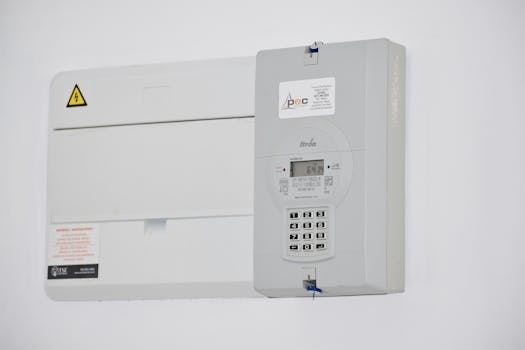Money Management
7 Steps to Review and Adjust Your Budget Every Month for Success
Take control of your money by learning how to review and adjust your budget every month. Practical steps and expert strategies help you reach financial goals, reduce stress, and build better spending habits.
Advertisement
Facing a pile of receipts and monthly statements, you might wonder where your money went. We’ve all experienced that moment. Committing to review and adjust your budget monthly brings clarity—and control—to your finances.
Many people overlook regular budget check-ins, leading to confusion or unplanned expenses. Consistently reviewing and fine-tuning your spending habits lets you approach your financial goals with focus, not fear. Small changes today can build lasting security.
This article offers clear steps, strategies, and real-world examples so you can confidently evaluate your progress and adjust your budget—no guessing, just practical guidance with realistic actions. Explore tips and tools you can use right away.
Pinpoint Your Starting Line: Gather and Organize Every Monthly Detail
Sitting down with clear documentation sets the foundation for accurate improvements. Collect every bill, pay stub, and receipt for the month as your first actionable step. Accuracy here prevents future guessing.
Ordered paperwork and digital records make it easier to catch trends or duplicate payments, speeding up the process to adjust your budget as you progress through each step.
Define Essential and Nonessential Expenses with Precision
Group your monthly transactions into two columns. Write essentials like rent, insurance, and groceries in one; streaming services, dining out, or subscription boxes in another. This head-to-head comparison often uncovers small costs adding up over time.
Seeing these categories in front of you—a list on paper, a spreadsheet, or an app—heightens awareness of what’s truly vital this month versus what’s negotiable if money gets tight.
Once the split is clear, set aside essentials and highlight top three nonessentials where trimming would least affect your lifestyle. Choose a starting adjustment for next month’s budget calculation.
Spot Recurring Payments and Annual Surprises
Flag any transaction that repeats monthly or slips in once a year, like insurance renewals or holiday expenses. Highlighting recurring charges helps you plan for predictable costs and eliminates any forgotten drains on your budget.
A great script: “Do I still use this service?” or “Did this annual fee surprise me again?”—each flagged response deserves a line on your review checklist or a quick call to cancel unused services.
Not every recurring payment needs removal, but active consideration turns autopilot spending into deliberate choices. Allocate that money to something meaningful or put it toward your savings goals instead.
| Category | Tracking Method | Action Step | Takeaway |
|---|---|---|---|
| Utilities | Online statements | Compare month to month | Spot spikes; adjust usage if needed |
| Groceries | Receipts, grocery apps | Log and total weekly | Find overspending patterns |
| Subscriptions | Bank records | List and question necessity | Cut unused; keep valued |
| Insurance | Annual premiums list | Set reminders for renewals | No last-minute surprises |
| Gas/Travel | Monthly credit card | Note seasonal changes | Budget extra for holidays |
Spot Spending Patterns Quickly: Visualize and Track Monthly Flows
Reconciling what you think you spend versus reality clarifies where you’re on track and where drift occurs. Visual tools make this process faster and more intuitive every month.
Put together easy-to-read graphs or charts, even simple colored lists. Monthly charts reveal overspending habits at a glance and show instant progress after you adjust your budget for just one week.
Map Out Major Spending Clusters
Highlight categories eating up most of your cash. Mark groceries, utilities, or online shopping in bold colors. If food costs eclipse entertainment by two-to-one, that visual cue prompts a closer look next cycle.
A simple pie chart or bar graph—hand-drawn counts—shows where your top three spending clusters live. Catching overspending here trumps fussing over small-ticket items.
- Print your bank statement for the month and use a yellow highlighter for every food purchase. This immediate comparison sets the priority for next month’s changes and ensures you stay on track.
- Circle impulse purchases in red to track patterns and rethink small, frequent buys that add up. This hands-on review makes each spending decision more intentional throughout the month.
- List every cash withdrawal in a notebook, being specific about where and why the cash was used. Consistency here infects your other financial habits with structure and mindfulness.
- Post each major category’s total on the fridge or home office corkboard. Visibility keeps goals top-of-mind all month, so adjustments aren’t forgotten or buried.
- Rotate review days—sometimes use Sunday evenings, other weeks try mid-month. Changing your routine refreshes your awareness and establishes flexible but steady accountability.
This visual mapping routine quickly lets you adjust your budget before small leaks become a flood, making future reviews less stressful and far more effective.
Decipher Tricky One-Time Categories
Unfamiliar expenses, like last-minute gifts or car repairs, break routine patterns and can trip up even careful planners. Assign those to a unique category each month for quick review.
If such categories keep growing, ask yourself: “Was this truly a one-off, or am I seeing a hidden recurring issue?” Place this insight front and center when revising next month’s plan.
- Label car repairs and gifts as unique expenses and log the date. This keeps these amounts from inflating other categories in your overall budget review.
- Note the context for the purchase. “Birthday gift for Sam” ties the expense to its purpose, so you budget for it or decide it wasn’t necessary after all.
- Enter the one-time cost in a ‘special expenses’ column and revisit monthly. If the column fills up, it’s time to adjust your budget for more flexibility or prevent similar surprises next month.
- Decide quickly whether you want to absorb the cost, cut elsewhere to offset it, or set up a special fund for such charges in the future.
- Ask friends and family for realistic numbers on infrequent expenses, like dental visits or appliance breakdowns. Use this knowledge to set accurate benchmarks, not best guesses, for next month’s review.
Creating dedicated space for irregular costs makes your core budget categories more transparent and planning for next month far less stressful.
Set Realistic Goals: Match Budget Targets with Everyday Life
Translating numbers into daily habits ensures that budgeting works for you, not against you. Assigning a real-world context to each adjustment keeps financial changes from feeling restrictive or overwhelming.
Once you spot an area to refine, write down a goal that matches actual habits. “Eat out twice a month” instead of “eat out less” provides a concrete path to follow.
Establish Routine Milestones
Create monthly calendar reminders that align with your goals. For example, if you want to reduce coffee shop spending to $40, set a calendar alert after each $10 increment.
This approach links digital cues to your daily routines. You might hear your phone buzz and skip the next drive-thru, appreciating immediate feedback from your plan.
Set a recurring reminder: “Review entertainment spending every Thursday.” These touch points bake new habits into your budget, making changes stick naturally across the month.
Translate Big Goals into Step-by-Step Actions
If saving $500 sounds daunting, rewrite it as “Set aside $125 each week.” Focusing on smaller units transforms giant leaps into easy steps.
Every time you reach a micro-goal, like packing lunch three times this week, check it off a list. Success breeds momentum. This steady progress helps when you revise and adjust your budget in the future.
Use analogies to reframe progress: just as running a 5K starts with the first lap, reaching financial targets depends on breaking them into daily strategies.
Adjust as You Go: Respond Swiftly to Unplanned Shifts
Building in flexibility ensures you remain calm—and in control—when income or expenses change mid-month. Timely response keeps your progress on track and softens the blow of surprises.
Don’t wait until the month’s end to act. When an adjustment is needed, address it the day you spot an off-target category or unexpected charge on your statement.
Address Income Changes Immediately
If you land an extra shift or lose overtime pay, recalculate your monthly total and revise spending limits the same day. Say aloud, “My income changed—let me update my numbers right now.”
Pausing for a couple of minutes with your calculator prevents drifting away from your targets, ensuring each adjustment fits your reality. Direct changes head-on instead of making up ground later.
This proactive mindset stops small shortfalls from compounding. It helps you adjust your budget on the fly—before issues turn into stress.
Redirect Extra or Surprise Dollars with Intention
When a refund, bonus, or cash gift arrives, decide on its use before spending even a dollar. “Let’s put $100 into next month’s travel fund,” you might say at the kitchen table.
Announce your plan, even to yourself. Studies show that vocalizing your intention strengthens follow-through, embedding responsible habits into everyday decisions.
Directing any windfall into priority categories—like paying off debt or building savings—makes your budget flexible yet purpose-driven. Repeat this simple step as often as extra funds land in your account.
Learn and Iterate with Tools: Use Apps, Calendars, or Spreadsheets Effectively
Making progress feels smoother with the right technology. Automating calculations frees up mental space so you can focus energy where it matters—catching trends and fine-tuning how you adjust your budget monthly.
Try different formats to see which aligns with your personality and life stage. Whether it’s color-coded spreadsheets or reminder apps, prioritize ease of use over advanced features or complexity.
Harness App-Based Automation
Set up real-time notifications for new purchases. Each ping reinforces conscious choices. “Purchase at Grocery Mart—$58”—the alert creates accountability on the go, before confusion builds.
Regularly review app-generated summaries. A quick glance at digital graphs provides instant clarity, so you don’t need to wait until month-end to steer your spending back on track.
Link accounts cautiously and set permissions. Privacy and security matter; always read the fine print when syncing banks to apps. Review connections quarterly as your preferences shift.
Customize Spreadsheet Templates for Your Needs
Adapt or build templates that calculate subtotals automatically by category. Listing all household members’ expenses in one table creates a shared, unified view—minimizing duplicated spending or missed costs.
Add spots for quick notes, like, “Car needed oil change—add $35 to August,” making your reviews richer with real-world context. Weekly or monthly color-coding makes trends leap off the screen—and prompts future planning.
Review your spreadsheet with someone you trust once per quarter. Outside feedback can reveal blind spots or inspire new budgeting targets you hadn’t considered.
Keep Yourself Accountable—and Motivated Month After Month
Sustaining energy for long-term improvement means more than sticking to numbers. Inject small wins, community, and honest conversations into your routine, and reviewing your budget won’t shrink to a checklist—it’ll feel rewarding.
Engage friends or family in short check-ins. A five-minute call or coffee can provide encouragement or fresh solutions—plus, shared goals naturally boost follow-through for everyone involved.
Track Progress Publicly or Privately
Create a budgeting “scoreboard”—a fridge chart, folder, or app leaderboard. Tally how many times you stuck to your goal this month, not just how much you spent. Gamifying the review process increases motivation.
Alternatively, keep a private journal. “Celebrated dinner out cost less than last month,” or “Skipped an online sale—$50 saved.” Re-reading proof of growth counters setbacks and fuels persistence.
Decide which style fits your temperament best. Whether it’s public celebration or quiet determination, stick with the method that feels most satisfying month after month.
Refine with Support Networks and Social Cues
Share your changed habits with close friends: “I switched to homemade lunches, trimmed $120 last month.” External validation and shared success stories spark healthy competition and provide inspiration for next month’s review.
If privacy feels more comfortable, find anonymous budget communities online. Brief posts about your progress build momentum and normalize the process of adjusting your budget continuously.
Schedule “review parties” quarterly—a few friends with spreadsheets and snacks. This ritual combines social energy with focused goals and avoids isolation in personal finance victory or struggle.
Monthly Review as Routine: Repeat, Improve, and Celebrate Every Success
Regular, mindful reviews transform budgeting into a habit, not a chore. Making each process easier empowers you to adjust your budget smoothly, so finances grow with your evolving life moments.
Celebrate each improvement, no matter how minor. “I trimmed $15 from my streaming bill!”—recognizing wins cements good habits and gives you energy to revisit goals next month without dread or delay.
Remember, perfect months are rare. Treat missed targets as information, not failure. Each edit builds a history of growth—and brings you closer to your personal version of financial success.
Frequently Asked Questions
How often should I adjust my budget?
It’s most effective to revise your budget monthly, after reviewing recent expenses and income. Regular adjustments let you stay proactive and responsive to any changes, reducing surprise shortfalls and giving you greater overall control.
What if I miss a spending category while reviewing?
Missing a category is common, especially during the first few months. When you notice the oversight, add it immediately to next month’s review template. This keeps your process honest and helps prevent similar mistakes in the future.
Do I need special software or can paper and pencil work?
Both methods work. Many people start with pen and paper and move to a spreadsheet or app as their needs evolve. The key is consistency and picking the tool that best fits your personality and lifestyle.
How do I handle shared expenses with a partner?
Start with honest conversations about income, bills, and priorities. Use a shared document or app to track joint spending. Schedule regular check-ins together to review and adjust your budget as a team, ensuring transparency and fairness every month.
What’s the best way to handle variable or unexpected income?
Track average income over several months and base your essential expenses on the lower end of your estimate. Save any surplus or windfall in a buffer fund. This approach lets you meet your obligations even during low-income months, keeping your finances steady.





